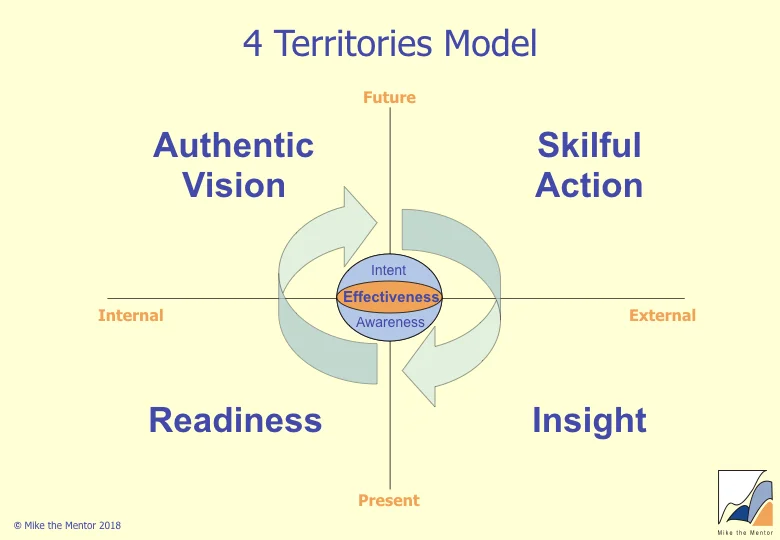Defences To Change
HOW WE PRETEND WE DON'T NEED TO CHANGE
Why this is important
Not only is most of our behaviour unconscious (see Conscious Leadership), but we have internal mechanisms that prevent us from noticing that what we say we do, and what we actually do, can be very different. So we may think we're walking our talk when we're not! We hide from ourslves the evidence that we need to change - and so we don't change, or even feel we should!
The Idea in Brief
Much of our perceiving, thinking, feeling and acting is habitual and unconscious. The internal driver that ensures these habits are sustained is our desire for comfort - we make those behaviours we want to repeat feel comfortable, and we make those we don't want to do feel uncomfortable (not just when we do them but if we even think about doing them). This way, without thinking, we respond consistently guided by our desire for comfort. Which is great when our reactions are relevant - but potentially career and relationship limiting when they're not!
The Idea in Detail
We all like to think that we behave with integrity, are self-aware, and walk our talk. Whilst this will be true some of the time, all the evidence points to the fact that much of the time we say one thing, do another, and then hide from ourselves that we are doing this!
How does this come about?
The reason we take actions is to change how things are in the world ("Current Reality") into how we imagine they could be ("Desired Reality"). Our desire to close the gap between how things are and how we would like them to be motivates us to plan and take the actions necessary to bring the Desired Reality into being (see Straightforward Action Cycle map).
If we don't get the desired results, we learn to change and refine our actions until we achieve what we wanted to achieve. In doing so, we see clearly what's happening, what we do in response, the impact it has, and what if anything we need to do differently to bring about the desired Future Reality. Generally, this process works well, and more so in situations where we have little emotional energy invested in the outcomes.
But when there are stronger emotions (which we may well be unaware of) associated with what we're doing, we don't behave in this rational, self-aware way. Such emotions are often evoked when we face situations that are to some extent uncertain or ambiguous - for example interacting with other people - where we fear the possibility of threat or embarrassment. Then we tend to react in a way that will reduce or remove the uncomfortable feelings. Because we've been doing this for most of our lives we have become very skillful at doing it automatically and unconsciously ("unconscious competence"). And when it's a competition between our conscious intention and our unconscious drives, needs, and habits, generally it's the unconscious that wins.
With this avoidant behaviour, a different action cycle plays out. Unlike the example above, this happens unconsciously and outside of our awareness. We unconsciously imagine that the Current Reality will lead to a potentially threatening Future Reality. There is an immediate flush of uncomfortable feelings (embarrassment, fear, anxiety, etc) which, before we know it and indeed without us knowing it, causes us to try and get rid of these uncomfortable feelings (see Defences - the Unconscious Dynamic map). These actions consist of a variety of dysfunctional behaviours:
avoiding conflict and difficult conversations
having the same arguments again and again
supporting decisions in meetings (and then rubbishing them outside)
acting against the values we espouse
not noticing or pointing out the elephant in the room
believing that we are powerless to change
failing to see our part in creating and sustaining the dysfunctions
failing to address the dysfunctional behaviours.
These dysfunctional behaviours are the outward signs of defences we create. When our defences are activated, they make us behave in ways that reduce our sense of potential threat. The result is that we:
produce consequences that we do not intend when dealing with difficult problems
hold other people or the system responsible for errors, and don't examine our own responsibility
minimize our risk taking, our openness and forthrightness, and our willingness to confront conflict directly
pretend to engage with situations whilst keeping hidden from ourselves that we are actually avoiding engaging
repeat errors skillfully so that they can continue to be repeated
create organisational black holes in which information is driven underground.
The person who has done most to explore defences and dysfunctional behaviour in organisations is Chris Argyris. One of his contributions has been to show that defences (which he refers to as Traps) are commonplace and universal. He and his colleagues have studied the behaviour of well over 10,000 individuals. When facing difficult or potentially embarrassing situations, most of them acted in ways that created dydfunctional behaviours (Organizational Traps: Leadership, Culture, Organizational Design, p17). There is no reason to suppose you or I are any different!
But, if we knew that we were doing this, we would feel embarrassed and defensive, and our self-images would be threatened. Therefore, to protect us from these uncomfortable feelings, we hide from ourselves the fact that we behave dysfunctionally, and then hide this hiding from ourselves! Thus we make the defences self-reinforcing and self-sealing, and so are even more effectively trapped! As Argyris says "For example, rather than being open and honest, we say one thing in public and another in private - and pretend that this is the rational thing to do. We then deny doing this and cover up our denial. And in doing this we trap ourselves" (Organizational Traps: Leadership, Culture, Organizational Design, p2).
It is this hiding the hiding that makes change so difficult. It's one thing to try and change the things we know we do; it's a whole magnitude of difficulty harder to change the things we don't even know we are doing!
What You Can Do
start by noticing other people's dysfunctional behaviours and wonder what might be driving them. (This is to help you learn to notice dysfunctional behaviours)
then apply this learning to noticing your dysfunctional behaviours - use the list above to help you notice them
ask yourself what might be driving these behaviours (it will probably be the avoidance of feelings like embarrassment and shame)
notice how powerfully aversive these feelings are - and practice staying with them until you can more easily tolerate them
find slightly challenging (but not too challenging!) situations in which you can behave as you choose, not as your feelings decide.
Further Reading
- Organizational Traps: Leadership, Culture, Organizational Design, Chris Argyris, 2012.

